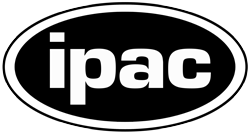What is presented here are simulations from a wide range of different sources. Particularly for the Wide-Field Instrument (WFI) simulations, if you are intending to use the simulations for research or observation planning and data analysis purposes, we recommend that you first consult the reference paper(s), if available, and documentation associated with a simulation set.
Note: The simulations for the Coronagraph Instrument are current up to the ROSES-2024 Call for Proposals for the Coronagraph Community Participation Program
Dark Energy
- NASA Open Universe 2024 Roman-Rubin Image Simulations (OpenUniverse2024 et al. 2025)
- Roman High-Latitude Imaging Survey Simulated Images (Troxel et al. 2023)
- A Simulated Roman High-Latitude Time-Domain Imaging Survey (Wang et al. 2023)
- Simulations of grism observations of high redshift galaxies in the Galaxy Redshift Survey (Wang et al. 2022)
- Simulations of the Galaxy Redshift Survey by the Formulation Science Investigation Team (Wang et al. 2022)
- Photometric Redshift Calibration of the Roman Space Telescope Weak Lensing Measurements (Hemmati et al. 2019)
- Weak lensing galaxy simulations in the high-latitude survey (Spergel et al. 2015)
Exoplanets
- Microlensing Data Challenge (Final Jamboree: Apr 30, 2021)
- Microlensing event simulations targeting the Galactic Bulge (Penny et al. 2019)
- Microlensing light curve fitter (Poleski & Yee 2019, GitHub)
- Coronagraph Instrument observing scenario simulations
- Dark Hole Algorithms Working Group for Coronagraph Instruments
- Coronagraph Instrument Simulated Contrast Curves
- Additional Coronagraph Instrument Parameters, Models and Data
- Roman Space Telescope Coronagraph Instrument Exoplanet Characterization
- Coronagraph Instrument: Observational brown dwarf spectra
- Coronagraph Instrument: Direct Imaging Data Challenge
- Coronagraph Instrument: Spectral Imaging Data Challenge
- Coronagraph Instrument: Circumstellar Disk Simulations
- Models of the Coronagraph Instrument pupil
